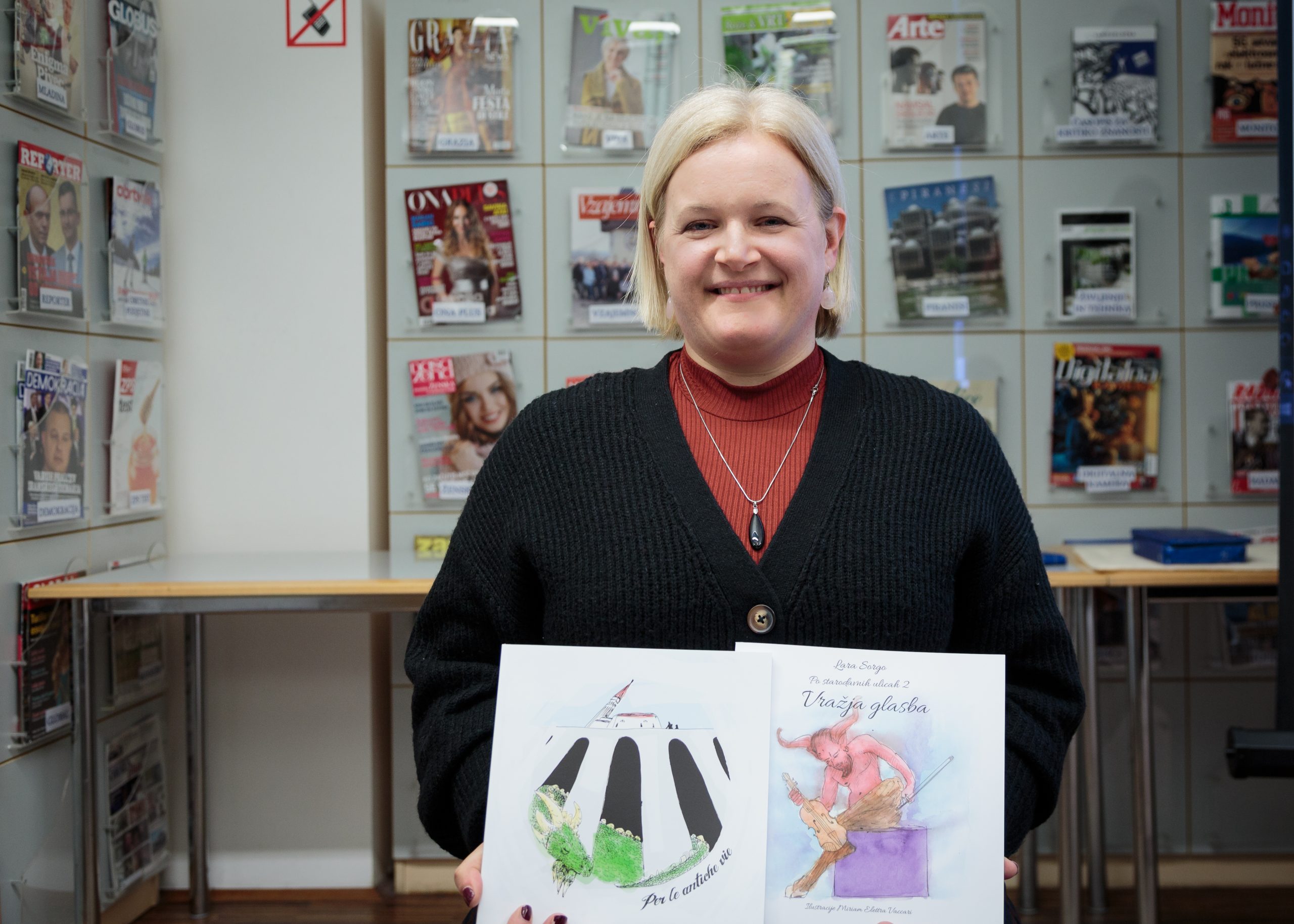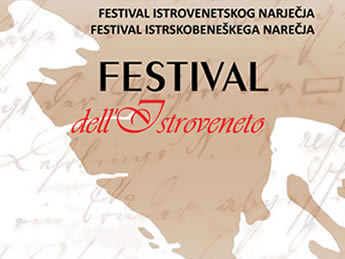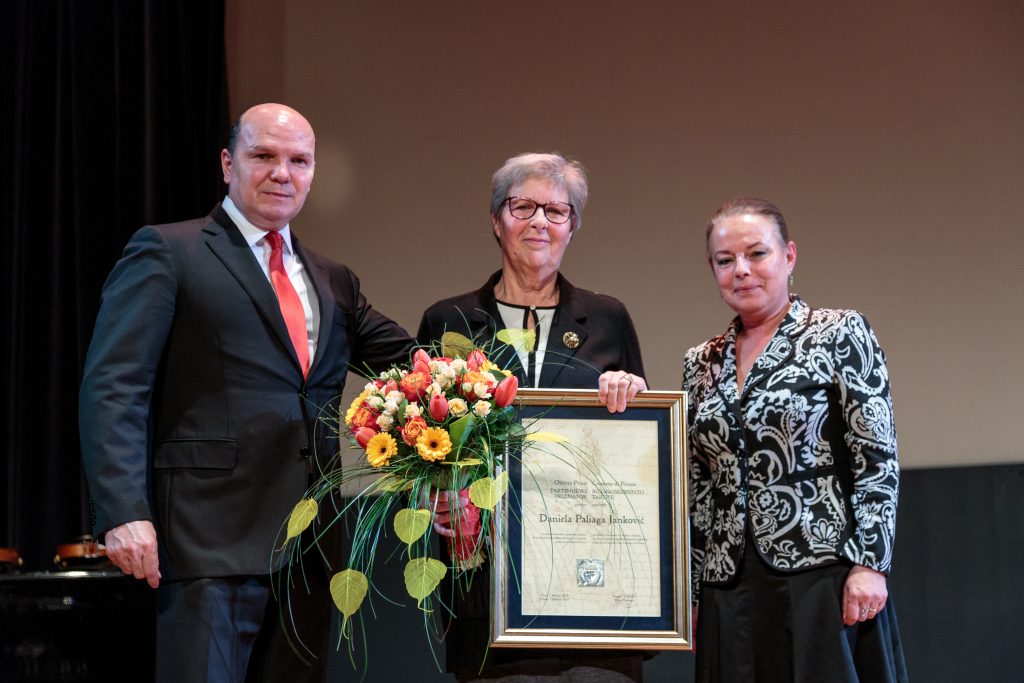Il Riconoscimento Tartini a Daniela Paliaga

Per le antiche vie, pubblicazione bilingue per bambini
02/23/2020
Festival dell’Istroveneto
02/25/2020
Il Riconoscimento Tartini di quest’anno, che viene assegnato annualmente dal Comune di Pirano in occasione della cerimonia solenne per la Festa della cultura slovena, è stato conferito a Daniela Paliaga Jankovič, candidata proposta dalla Comunità Autogestita della Nazionalità Italiana di Pirano.Nella motivazione, è stato sottolineato che il patrimonio culturale svolge un ruolo importantissimo nella formazione dei cittadini. Esso concorre anche alla formazione di una identità locale, costituisce un bene comune fondamentale per la sua funzione educativa ed istruttiva. L’amore per l’arte e il patrimonio ha portato Daniela Paliaga, nel suo percorso di ricerca e di recupero, a proporre e condividere con tutta la popolazione locale, e con i numerosi ospiti che visitano la nostra cittadina, una parte importante della storia piranese.
Con le sue originali “passeggiate-racconto” ha parlato delle mura, delle cisterne, delle porte e delle leggende. Negli ultimi due anni sono stati pubblicati Per piazze e cortili alla ricerca dell’acqua, catalogo delle cisterne e delle fontanelle a Pirano ieri e oggi, e Storia di un faro.
Come docente e preside del Ginnasio “Antonio Sema” di Portorose, ha condiviso il suo sapere con i giovani, oggi invece è attiva in varie associazioni e istituzioni, dove è portavoce di ogni cosa connessa con il patrimonio culturale e la sua valorizzazione.
Il sindaco del Comune di Pirano, Đenio Zadković, nel suo intervento ha sottolineato l’importanza della convivenza tra i popoli del nostro territorio, che è ricorre anche dall’inno nazionale sloveno. L’oratore ufficiale della serata è stato il giornalista Boris Šuligoj.
Alla cerimonia, per la regia di Ivan Loboda, hanno partecipato Lara Komar, i cori riuniti “Georgios” (maestro Danijel Grbec) e “Giuseppe Tartini” della CI di Pirano (maestro Sašo Fajon), Valter Dragan e Vesna Jevnikar, l’Orchestra d’archi della Scuola di musica di Capodistria diretta da Žiga Cerar.
Le foto della serata.
—
Letošnje Tartinijevo priznanje, ki ga Občina Piran vsako leto podeli na slovesnosti ob slovenskem kulturnem prazniku, je romalo v roke Daniele Paliaga Jankovič, ki jo je predlagala Samoupravna skupnost italijanske narodnosti Piran. V obrazložitvi so predlagatelji izpostavili pomembno vlogo kulturne dediščine za življenje meščanov, saj prispeva k oblikovanju lokalne identitete ter ima vzgojno in izobraževalno moč, Daniela Paliaga pa je ljubezen do piranske kulturne dediščine delila tako z domačimi kot tujimi obiskovalci.
»Z raziskovanjem piranskih zakladov in vodenimi sprehodi je radovednežem razkrila in z njimi delila marsikatero mestno skrivnost. Njene pripovedi o ljudeh in dogodkih so v mnogih pustile globok vtis. V želji, da bi se spomini ohranili, sta v zadnjih dveh letih izšli knjižici, posvečeni piranskim trgom, vodnjakom, obzidju, svetilniku,« so zapisali.
Dodali so še, da je vedenje o dediščini delila najprej z mladimi kot profesorica na Gimnaziji Antonio Sema, odkar je v pokoju, pa je aktivna v raznih društvih in je »glasnik vsega, kar je povezano z ljubeznijo do mesta, v katerem živi, in njegove kulturne in arhitekturne snovne in nesnovne dediščine«.
Gostitelj večera, župan Občine Piran Đenio Zadković je v svojem nagovoru izpostavil pomen sožitja med narodi na našem ozemlju, kar opeva tudi slovenska himna.
Slavnostni govornik na slovesnosti, ki jo je režiral Ivan Loboda, je bil Boris Šuligoj, točke je z igranimi vložki v slovenskem in italijanskem jeziku povezovala Lara Komar v vlogi muze, na odru pa so nastopili: združena pevska zbora MePZ Georgios (dirigent Danijel Grbec) in MePZ Skupnosti Italijanov Giuseppe Tartini Piran (dirigent Sašo Fajon) , Valter Dragan in Vesna Jevnikar ter Godalni orkester Glasbene šole Koper pod vodstvom Žige Cerarja.

